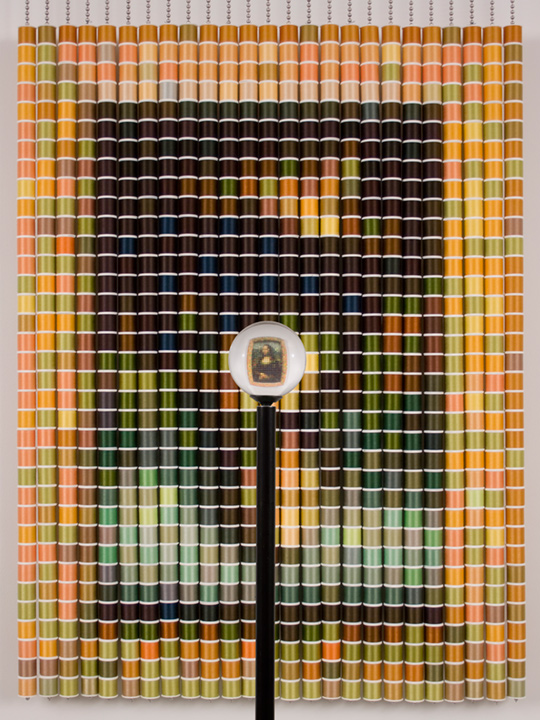"Common Senses"
Exit Art, NYC
by Eleanor Heartney
April 2008
"Common Senses," is the second in a series of three exhibitions organized by Exit Art to explore connections between art and science... "Common Senses" situates itself in the middle of contemporary debates over the relationship between brain and consciousness. This is, of course, long contested territory. Christianity finessses the so-called mind-body problem by holding that the soul is an intangible energy inserted by God into the physical vessel that comprises the body. In the 17th century, Rene Descartes attempted to resolve the issue by invoking the pineal gland as the place where mind meets body. The Victorian era saw efforts to measure the soul by weighing the body just before and after death and calculating the difference. In the 20th centery, science became more confident of its ability to discover links between the physical organ of the brain and states of consciousness. Application of these discoveries sometimes had tragic results, as when crude models of brain activity led to practices like lobotomies. And the mind-body conundrum has inspired literature, art and science fiction from Mary Shelley's Frankenstein to Andy and Larry Wachowski's film trilogy The Matrix. Contemporary analogies between brain and computer compare the mind-body split to the distinction between sofware and hardware.
"Common Senses," curated by Exit Art directors Jeanette Ingberman and Papo Colo, poses the question: Can art, which deals in metaphor, help us understand the link between our inner and outer worlds? the show offers an intriguing collection of artworks that draw in differing degrees on current scientificc thought and technology to offer visualizations of mental activity...
...Other works attempt to provide models for the ways the brain organizes sense data to create perceptions. Devorah Sperber's After the Mona Lisa 4 (2006) is composed of a grid of spools of thread in various colors suspended from chains. At first glance, they appear to create an abstract pattern of earth tones. However, when one looks through a glass sphere positioned in front of the work the image is condensed and inverted to create an approximation of the Mona Lisa. The work thus offers a graphic illustration of how the brain organzes sensory information to create recognizable image...
